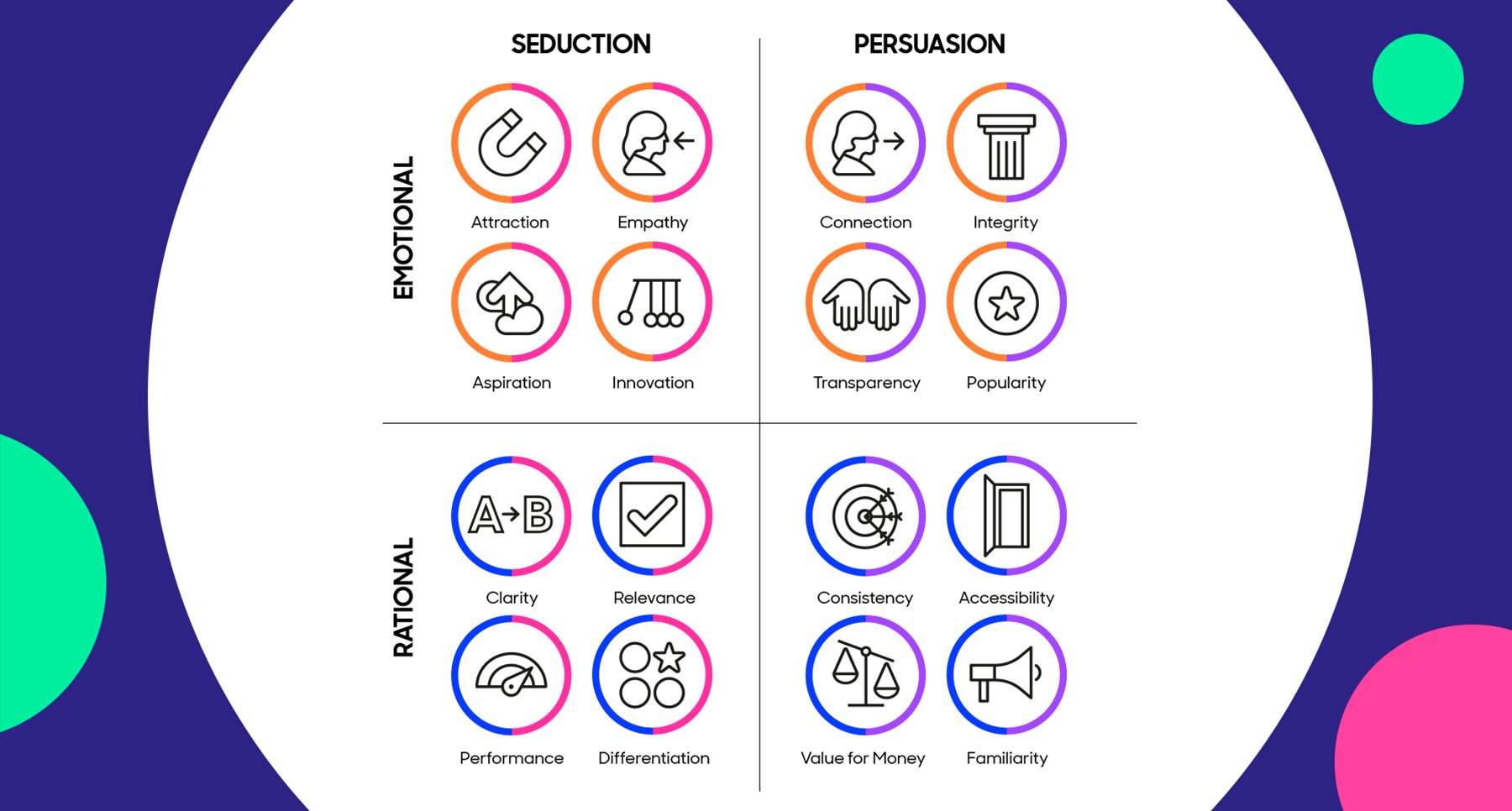Posted on June 9, 2022
Updated on March 13, 2023
5 min read time

No matter how successful your brand is, there will come a time when growth begins to plateau.
This could be because you’ve saturated the market and your share of voice (what you invest in marketing) is relatively consistent with your share of market. Or it might be that your category’s growth is slowing.
Your logical next step here is to look further afield, thinking up new ways to excite your consumers and inject growth back into your category.
This is where diversification comes in: the moment where you go back to the drawing board and think about how your brand can provide new value in a different way to its consumers.
Just like you shouldn’t be putting all of your eggs in one basket - in marketing it’s better to hedge your bets on a combination of products.
This can be done in a multitude of ways, whether that be selling your current product to a new audience, selling a new product to your current audience, creating a line extension at a different price or expanding into an adjacent category with a different offering.
Whichever way you decide to go, we’re here to help.
In this blog we’ll explore:
There are multiple benefits to diversification.
These include:

On a product level:
You’ll know it’s time to diversify when:
Nestle recently announced their decision to diversify into a completely new category - expanding into the plant milk sector.
Apple found huge success with their iPhone, and from there, diversified into computers, tablets and headphones to grow further.
If you’ve been focusing on a specific product and you’ve reached most of your target audience, it might be time to take a step back and think about diversifying .
On an audience level:
If you feel you’re struggling to find new people to buy your products, it might be that you need to broaden your targeting.
Can you release a new product to appeal to a wider audience? Think of how even established meat brands are now expanding into the meat-alternative world, producing their own alternative options to entice plant-based eaters to buy from their brands.
On a societal level:
Sometimes diversification happens in response to unexpected events in our environment. In the peak of COVID, many brands had to release new products to keep up with the changing demands of their audience. We saw some clothing brands release matching masks to help their audience accessorize their outfits with their face mask. When restaurants closed, we saw many businesses expand into meal kits to help consumers enjoy their favorite restaurant-style meals from the comfort of their own homes. The same applied to alcohol brands, as some embraced the challenge and expanded into the production of hand sanitizer products.
Keeping a pulse on these evolving needs is key to judging the right time to diversify.

When outlining your diversification strategy, it’s important to align to the needs of your audience. A good way of ensuring your strategy is customer-centric is by using the 16 Driver framework – a marketing framework that’s been neuroscientifically proven to strengthen brand-consumer relationships.
These Drivers range from rational factors – like how accessible or consistent a brand is – to the emotional – like how aesthetically appealing or attractive it is.

You can think of these Drivers as ‘opportunities’ for your brand – a way for you to hone in on a specific aspect of your brand which consumers value in your category .
Maybe you want to come across as more Innovative through your new product launch?
Or perhaps you want to release a product that really taps into a key consumer pain-point? In this case, Empathy would be the Driver for you to focus on.
Although you can choose to focus on any of the 16 Drivers , always keep these 5 in mind when mapping out your diversification strategy:
An example of an Innovative diversification strategy is Spotify’s, ‘Car Thing’. The brand released their own car-play product to make it easier for consumers to listen to their favorite songs when on-the-go. The aim was to provide a ‘truly frictionless audio experience for users. This was an entirely new area for Spotify, as their first physical product. The reason it did so well was because it was grounded in the universal consumer pain-point of the difficulty of listening to music when driving (Empathy). The new hardware addresses these points, providing a seamless listening experience for all drivers.
Not only did Spotify deliver an Innovative and Empathetic strategy, they also stayed true to what their brand stands for and communicated clearly why they’d made the move (Consistency and Clarity). Ultimately, the new product still feels Relevant to the brand’s proposition and to the needs of its consumers, who want an easier listening experience while travelling.
When done right, diversification will be a huge gain for your brand. But the important thing to remember is starting slowly. Diversifying too quickly will confuse your existing consumers. It’s best to dip your toes in slowly and test, test, test - to ensure what you’re launching will resonate with your consumers.
If diversification is the next step for your brand, we’re here to help you out with an exclusive creative testing offer – unlimited testing for June only when you sign up to ProQuo. This allows you to test any new asset , idea, ad or campaign - finding out within hours exactly how your consumers feel about it.
Our intelligent platform will take your brand further, faster.
Don’t believe us?
© 2020-2023 ProQuo AI International
All rights reservedWebsite by Blend